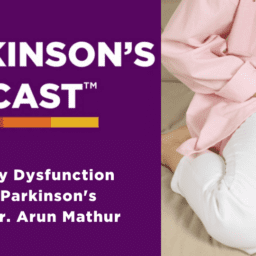Diane’s story reflects a common theme we hear from many people living with Parkinson’s in our community: the road to a Parkinson’s diagnosis is often long, complex and different for everyone. Would you like to share your own experience? Leave a comment below or complete our Moments of Victory® form to be spotlighted on our blog.
Written by Diane Schuirman-Hagedorn
At 42, I found an answer to my nearly six-year medical mystery: young onset Parkinson’s disease.
The first symptom I noticed was pain. At 37, I strained a hip flexor on a summer hike. Within six months, I also had sacroiliac joint pain. Then my shoulder started to hurt, too. My healthcare providers chased the pain. Roughly every six months I was referred to a new specialist and a new physical therapist.
Before I was finally sent to a neurologist, I:
- Saw numerous orthopedic specialists.
- Worked with 10 physical therapists.
- Had x-rays, a steroid injection and five rounds of prolotherapy (injections designed to stimulate the body’s healing response).
- Had 10 MRIs—both hips, lower spine, shoulder, brain. Several body parts were scanned twice.
- Had two EMGs.
- Received regular B-12 shots.
- Was tested multiple times for rheumatoid arthritis.
- Was advised to eat a gluten-free diet.
- Was hospitalized for a skin infection.
- Tried a chiropractor, acupuncture, rolfing, massage and a naturopath.
- Went from walking five miles a day to not being able to walk around the block.
I was and still am working full-time, and I’m fortunate to work in a supportive office. I made it a priority not to take sick days, though I often had medical appointments multiple times a week and needed to recuperate from injections.
Pain, Pain, Go Away
I hurt too much to sit all day at work. I stood during meetings. Some days I worked on my office floor with a yoga mat and a laptop, trying to get comfortable. After months of this, I stopped asserting I was going to get better and reluctantly let the company buy me a standing desk.
When prolotherapy didn’t help as expected, I resisted the advice to have steroid and platelet injections. Instead I took medical leave to complete a pain management program. I had been told pain management was a last resort; it took me a year to get the referral. The pain management program was one of the most helpful things I did and I still use the things I learned.
As I was mastering pain management techniques, I saw a shoulder specialist. I’d had a tremor for two years and I thought it was related to my shoulder pain. It was, but not in the way I thought. The specialist said, “You need to see a neurologist; I don’t do tremors,” and sent me back to my primary care provider for a neurology referral.
The Diagnosis
Six months later, I got in to see a neurologist. It took one appointment for her to conclude it was highly likely I had young onset Parkinson’s. When I improved after taking Mirapex, my diagnosis was confirmed.
By the time I was diagnosed I already knew I had lost some function on my left side and I wasn’t improving. I was not surprised to hear that I have a progressive disease. In some ways it was a relief to know what to call it and to know how to focus my time and money as I learned to manage it.
I don’t find it helpful to ask why my diagnosis took so long. While living with young onset Parkinson’s disease is certainly a challenge, I choose to appreciate the fact that with Parkinson’s-specific treatment, I have less pain and I’m more physically functional.
Stay Informed On Your Parkinson’s Journey
Our Every Victory Counts® manual gives people living with Parkinson’s, their care partners and their family members the tools they need to take control of their own Parkinson’s treatment through a proactive approach to self-care.
This summer, we launched a powerful new print edition of this free beloved manual.
It’s jam-packed with up-to-date information about everything Parkinson’s, plus an expanded worksheets and resources section to help you put what you’ve learned into action. Color coding and engaging graphics help guide you through the written material and point you to complementary videos, podcasts and other materials on the Every Victory Counts companion website. And, it is still free of charge thanks to the generosity of our sponsors.
Request your copy of the new Every Victory Counts manual by clicking the button below.
 Diane Schuirman-Hagedorn has young-onset Parkinson’s disease and works as a strategic communications consultant. You can email her here.
Diane Schuirman-Hagedorn has young-onset Parkinson’s disease and works as a strategic communications consultant. You can email her here.


















Thank you for sharing your story! I wish you the best. I agree that once we know better what the cause is, it’s easier to address it and feel better. My husband was diagnosed after maybe two years of odd symptoms but unlike you at first we felt very helpless after the diagnosis (which came along with some other health scares that have since resolved). Now almost two years later even though the disease has progressed by certain measurements, many symptoms have improved/ eased just because he has learned how to deal with them, changed various meds, and relearned consciously how to do certain things that used to be automatic (getting up efficiently from a chair/ more normal walking stride, etc). Also getting to know more people in the “Parkinsons’ Community” like yourself has helped him in a way that is hard to explain! We are more relaxed, positive, and happy now than when he was first diagnosed. Crossing my fingers for all of us that we and the “experts” learn more and more about the disease and how to deal with it…
The early stages of a diagnosis can oftentimes feel overwhelming and helpless because there are usually countless questions with few answers. However, as you begin to build your care team, plan for the future, and connect with those within the community, things will become more clear less foreboding. Thank you for commenting and sharing your story!
I had a similar in experience. The movement specialist doctors seem to be focused only on patients who demonstrate tremoring but not so much with those who have no out word evidence of pd. It was wh3n a neurologist had the foresight to try carbolevo is when I finally got relief fr9m pain, could walk longer less fatigue etc.
Since Parkinson’s is different for everybody, it can be a frustrating experience when trying to communicate non-motor symptoms with your health care team. By downloading our worksheets you can keep track of your non-motor symptoms and therefore effectively communicate with your movement disorder specialist. Thanks for commenting!
First noticed a little difference in balance and gait. Went to a neurologist who tapped my knee and observed my walk. Determined me OK. Several years later consulted another neurologist who followed a similar test procedure and determined me OK. Returned to him some time later where he repeated previous tests with the same result. This time he asked if I consumed alcohol. I replied “socially.” He recommended I not drink. Later consulted a geriatric specialist who gave me a brief exam, observed my walk and deemed me OK. By this time after several years of seeking an answer to my worsening symptoms, I saw a different neurologist who asked me to place one foot in line with the other. When I could not, he immediately suspected PD and tested to confirm.
I’m now on a regimen of carbidopa-levodopa and ropinirole. All symptoms persist but are greatly improved. Had earlier diagnosis been found, how much better conditions could I now experience? Physician, listen to your patient. Years wasted.
Donald, sometimes the road to a diagnosis comes from checking off the “obvious” causes, which is difficult with Parkinson’s and it’s variety of non-motor symptoms being present before motor symptoms. By keeping track of your symptoms, it’ll help your healthcare team better understand what you’ve been experiencing and therefore create a custom-made plan to help you in your everyday life.
Wow this is almost verbatim my story except diagnosed at 51